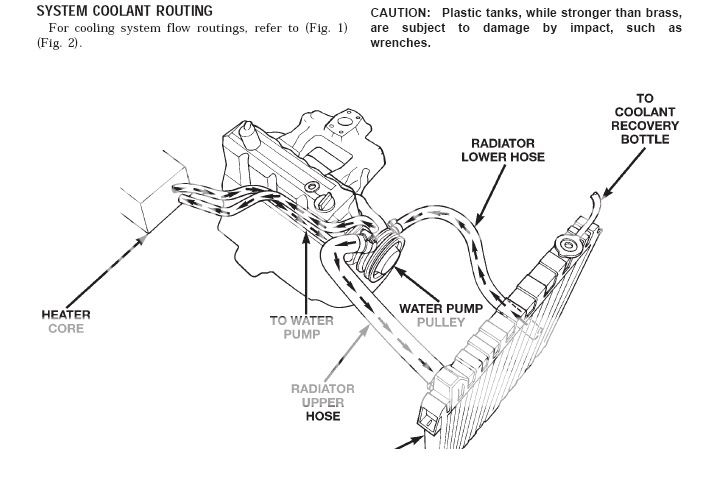Jeepguy03
NAXJA Forum User
- Location
- Connecticut
2000 XJ 4.0L, 130k miles.
Two years ago, my jeep was running hot. I replaced all the cooling system components including a new CSF 3 row radiator. Keep in mind that the previous owner removed the A/C system, so there is no condenser in front of the radiator. I also flushed the cooling system with prestone.
The new system has been great. On a hot summer day, I can floor the jeep on a long hill and the temp will spike to 211*, then immediately go back down to 200*. It runs 195*-205* pretty consistently according to scan gauge for most of the year.
The ambient temp outside right now is 12*. Lately, my jeep has been taking longer to warm up. When the thermostat opens, the temp drops back down to 185* then steadily climbs back up. The heat also sucks in this Jeep, and it has since I bought it. I've flushed the heater core twice, which seems to help a little each time. The heat is never really HOT. The hoses are hot to the touch, and the blend door is working. I can tell its working cause I can hear it moving if I have the radio off, and I can feel the temp difference in the air coming from the vents.
If I go on a long highway drive, the heat comes out decently warm. It just seems to take awhile for it to get to that point.
My previous 2000 could keep the cab warm with the windows down the heat was so hot. Is there any strong cleaner I could use on the heater core? Last time I did it the water came out clear but I feel like it still might be clogged. I also feel my Thermostat is working because the temps will fluctuate accordingly.
Two years ago, my jeep was running hot. I replaced all the cooling system components including a new CSF 3 row radiator. Keep in mind that the previous owner removed the A/C system, so there is no condenser in front of the radiator. I also flushed the cooling system with prestone.
The new system has been great. On a hot summer day, I can floor the jeep on a long hill and the temp will spike to 211*, then immediately go back down to 200*. It runs 195*-205* pretty consistently according to scan gauge for most of the year.
The ambient temp outside right now is 12*. Lately, my jeep has been taking longer to warm up. When the thermostat opens, the temp drops back down to 185* then steadily climbs back up. The heat also sucks in this Jeep, and it has since I bought it. I've flushed the heater core twice, which seems to help a little each time. The heat is never really HOT. The hoses are hot to the touch, and the blend door is working. I can tell its working cause I can hear it moving if I have the radio off, and I can feel the temp difference in the air coming from the vents.
If I go on a long highway drive, the heat comes out decently warm. It just seems to take awhile for it to get to that point.
My previous 2000 could keep the cab warm with the windows down the heat was so hot. Is there any strong cleaner I could use on the heater core? Last time I did it the water came out clear but I feel like it still might be clogged. I also feel my Thermostat is working because the temps will fluctuate accordingly.
Last edited:


